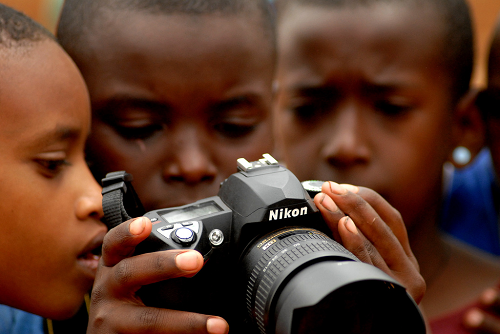Dec 30, 2025
Dec 30, 2025
by Hema Ravi
Analyzing a Visual Image
“Champions aren't made in the gyms. Champions are made from something they have deep inside them - a desire, a dream, a vision”.
- Muhammad Ali
Modern learning has undergone a paradigm shift towards the learner; technological revolution has modified the role of a teacher from instructor to facilitator. Children are open to learning from a very young age and early impressions go a long way in determining their personalities. It is important for them to develop social skills that include building relationships with others. Putting skills into practice would be the best way to improve learning. “A curriculum focused around a variety of practical activities with tangible outcomes hits the nail on the head.” Sharing the success story, an educator elucidates how activities “askit” “growit” “cookit” and “filmit” can be incorporated in the curriculum dealing with subjects like English, Maths or Science.(Kate McGee) This integrated approach helps them discover something that is deep within through questioning and logical reasoning.
Before discussing further, let us observe the picture given below to understand its relevance to the title.

“Tell me and I forget, teach me and I may remember, involve me and I learn.”
- Benjamin Franklin
This is a visual of a photography workshop organized by Gisimba Memorial Center, Rwanda, which is home to innumerable orphaned children. In the picture, three young people are peering into a digital picture just taken by one of them. Anticipation is writ on the faces of the children, as they wait for the image to emerge. The boy in the middle, who appears better built than the others, is holding the Nikon camera; he is flanked by peers on either side. The lighting upon the lad in the foreground is better for his face is clearer; a portion of his blue shirt is visible. The third child appears to be a girl, the ear stud and the neckline of the mustard-colored blouse is visible. The eye brows knit together indicate concentration and careful observation. A hazy outline of a fourth child is partially seen, a blue shirt is half detectable. Talking about the camera, it is a Nikon DX digital, black in color, with a neck strap. It has some ruler markings over the lens. The ‘focused’ look on the children’s faces reminds one of eleven year old Brunio in Daniel Coyle’s Talent Code, who becomes skilled at “elastico” - a ball handling maneuver, which he accomplishes after “small failures” and “rhythmic pattern of botches” (p.13) .
How would this program help? It would open a host of possibilities before them to experience, experiment, assimilate and retain information for future use. Putting it to professional use will enable them to earn a living and escape from the clutches of poverty. Notwithstanding the drawbacks these lesser known places have, children who possess the right attitude and aptitude or “concentrated talent” (p.14) can later smile at the lovely photographs taken by them splashing on front pages of magazines, newspapers et al, end up being dubbed Coyle’s “Chicken wire Harvards.” (p.11).
Advanced technology and digital revolution has generated enthusiasm in several youngsters and “the seriousness with which people are pursuing photography now has never been seen before,” says a celebrity photographer; “the mega interest that photography has aroused in a previously photo illiterate nation, it’s the number of photography clubs and workshops on offer.”(Biraia). In spite of the growing interest, there are fewer professional photographers in the world as compared to amateurs and wannabes, which validates that there is no short cut to success. “Passion for photography comes from the feeling of having created something unique and interesting.”(DPS)
No pains, No gains! Talent was not the sole contributor to the success of Tiger Woods or Warren Buffet – their perseverance, patience and positive attitude, aka “deliberate practice” was. (Colvin) Here, it would be appropriate to quote Graham Attwell - ‘New forms of learning are based on trying things and action, rather than on more abstract knowledge. ‘Learning becomes as much social as cognitive, as much concrete as abstract, and becomes intertwined with judgment and exploration.’ Writer and editor, ‘Parenting and Working Mother’ Katherine Lee observes – “even six-year-olds will increasingly understand the difference between "real" and "imaginary." They may become more interested in doing "real" things such as taking real photographs with a camera or making real food instead of pretending to cook in a play kitchen.”(Lee).
“In order to learn, education must be student-centered and student-driven. Research shows that “students retain 10% of what they read, 20% of what they hear, 30% of what they see, 50% of what they see and hear, 70% of what they say, 90% of what they say and do.” (Wikiversity)
And that is what the visual depicts –Learning by doing! This can help them latch onto a rewarding career trajectory, work their way through the stumbling blocks and become an Ansel Adams, Bresson……. (Meyer)
References:
Image (c) flickr.com
27-May-2013
More by : Hema Ravi

|
An insightful, and relevant article on learning and the available tools to make it effective. Thanks for sharing Hema. |

|
A nice article on learning! |